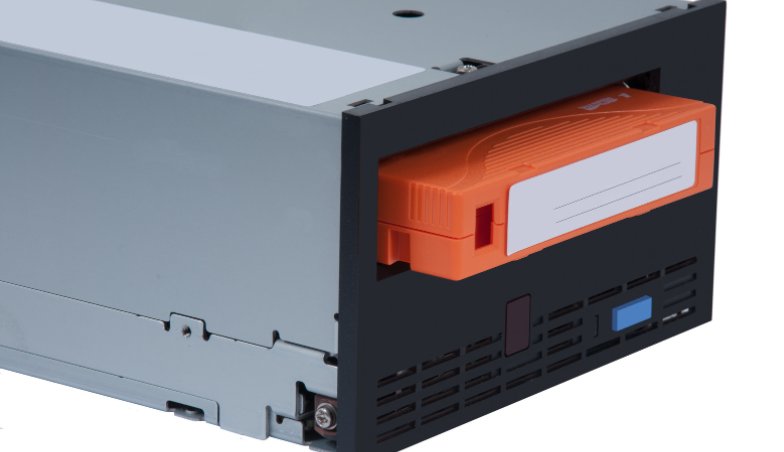Digital systems are evolving by the minute, and so is the most important aspect of computing systems, the storage. This brings us to the evolution of various types of storage and finding the best among them for maximizing efficiency.
LTO tapes are known for being the means of backup and storage for a considerable time, but with the introduction of cloud storage, the market is shifting away from LTO. It is no news that cloud storage is emerging as a functional alternative to LTO, but there are certain grey areas to be addressed before declaring what is best for you.
Here we dive into the differences and similarities of both storage types and find out what they have in store.
What is LTO & Cloud Storage?
LTO or Linear Tape-Open is a magnetic device used for data storage and was introduced as an alternative with open standards to the proprietary counterparts. The standard form of LTO is called Ultrium, and there have been nine different versions of this released from 2000 to 2020.
Most media companies have used LTO for long-term archival purposes and for backing up media. However, things are changing as the companies have started producing massive amounts of data, and maintaining LTOs at that scale is becoming more and more difficult. This leads to the quest for alternative means of storage that can tackle the shortcomings of LTO on large-scale scenarios.
The introduction of the cloud has taken things up a notch in terms of storage, and it is slowly replacing LTOs and other traditional storage forms. Cloud Storage involves saving data on the internet with the help of a cloud service provider. This storage format has eliminated almost all the issues concerning maintenance and accessibility and has transformed storage like never before.

Cloud storage has proven to be the perfect alternative for LTO for most cases, but there still are places where LTO is being used. In most cases, the cloud is considered for daily backups whereas, for long-term archiving. There is an exponential growth in the amount of data produced every day, and LTO is not completely out of the picture for storing volume-intense data. We can also witness that in sectors where large amounts of data are generated each day, LTO is still used as a low-cost option.
LTO has its up-points, but there is no denying the fact that the cloud is taking over. With the improved functionalities and benefits offered by cloud storage, it is continuously growing as an effective alternative to all traditional storage means across every sector.
Why Cloud Storage Is Better than LTO?
To establish why cloud storage is better than LTO, you need to understand the different attributes that define any storage system in the context of the cloud and LTO. This include:
Maintenance
LTO systems do need a considerable amount of manual intervention to function seamlessly. There is room for partial automation, but overall, it is impossible to make this system self-sustainable. This leads to dependency on people with the appropriate skills and expertise, which is indeed an investment.
If you consider cloud storage, there is very little manual intervention, and it does not call for any specific technical knowledge making it a more cost-effective and simpler option. The storage is provided by third-party service providers responsible for maintaining the servers and the integrity of your data.
Data Accessibility
Data retrieval is a pertinent attribute that defines the effectiveness of a storage system. Considering the fast-paced workflows and tight deadlines of this era, the demand for faster data retrieval is increasing.
Considering LTO, it does not keep up with the pace as it was originally designed for long-term storage. Meeting the expectations of the present day's accessibility rates is only possible with cloud storage. It might take hours to access data from the tape, depending on the size of the file.
Contrarily, cloud storage can provide almost instant access to data. Internet connectivity is the only factor of dependency here.
Scalability
In the case of LTO, the number of tapes required is directly proportional to the volume of data that is to be stored. Having large numbers of tapes is more likely to complicate the management. Besides, physically storing these tapes in an LTO library and maintaining it could be a real ordeal.
On the other hand, cloud storage is object-based, and it eliminates all the limits concerning the file size and structure faced in traditional forms of storage. Hence, you have an infinite resource in your hand with the ability to scale effectively and transparently according to your needs.
With the cloud, you can have all your data assets stored on the same platform, and you can search and access any file you want without breaking a sweat.
Advanced Search Features
Searching for a specific piece of data can be tiresome in an LTO system, as it is essentially offline. It is difficult to spot the required database primarily, and there is no provision to preview the tape's content before retrieval. This process might lead to various iterations that can take hours.
When you consider cloud storage, all the files and data blocks are linked with metadata that aid in search and retrieval within seconds.
Global Distribution and Collaboration
Physical aspects limit LTO, and it is almost impossible to have the same copy in various locations. This limits the possibility of collaboration to a great extent. Duplicating tapes for distribution is not a viable option as it involves a lot of hassle and time.
Within the cloud, it is very easy to replicate libraries despite their size to local points. This makes sure that all stakeholders in different regions have access to the data.

Durability
In terms of redundancy in LTO systems, the process involves duplicating the data into different physical tapes and shipping them to various locations. This involves a ton of costs and increases data security concerns in the process. Besides, consistent tape health checks have to be done to make sure that the data is secure. Other than being ridden with complexities, there are many downsides in terms of costs and time.
In cloud storage, data durability is maximized, and it is practically easier to distribute data on any scale. This method also offers multi-layered data redundancy, which completely throws away the possibilities of data loss.
Data Recovery
As we have discussed the advantages of the cloud over LTO in redundancy and distribution, it is also implied that data recovery rates are incredibly fast in the cloud. The lack of complex logistics makes data recovery almost effortless.
In LTO, data recovery is made manually, and it involves a ton of logistics that can slow down the process exponentially. This can cost you several unnecessary work hours, which is a big no for any business.
Upgrades
Upgrading an LTO system involves hardware maintenance and re-indexing data, which can spike the total cost of ownership (TCO). Constantly refreshing LTO technology involves upgrading tape libraries, drives, and archival software, which is much work.
In a cloud system, upgrades to the infrastructure are done in the background, and it barely requires anything from you.
Proofing And Compatibility
Rewriting data every time a new version of LTO pops up is practically impossible with large-scale data. There is a serious lack of compatibility in both forward and backward streams, which is a major drawback.
In cloud storage, the object protocols are very mature, and it expedites both software and hardware updates without any obstacles.
Incorporating Artificial Intelligence
The cloud storage infrastructure has made it very feasible to incorporate artificial intelligence in indexing and enhance processes. For instance, creating transcripts with audio recognition, metadata addition, and other similar tasks can be done without any hassle using AI.
LTO, on the other hand, is limited by the technology it was built upon. There is practically no room for any integration that can improve efficiency in LTO storage.
Conclusion
As we dive deep into the pros and cons of LTO and Cloud storage, it is obvious that the cloud has the upper hand in accessibility, safety, and other important aspects. Cloud storage systems are revolutionizing the digital world.
Besides, the stellar advantages provided by the cloud's scalable, transparent and secure architecture are making a point to replace LTO with cloud in any data-intensive sector. You might argue on the grounds of setting up cost and claim that LTO is better than cloud storage. This might serve true for a very small scale, but universally, the cloud beats LTO in every possible way. If you are interested in LTO or cloud storage for your team, contact an expert at ProMAX Systems to find the best solution for you.


-1.jpg?width=300&name=My%20Post%20(27)-1.jpg)